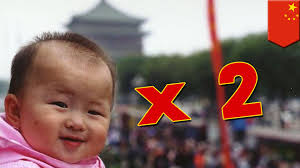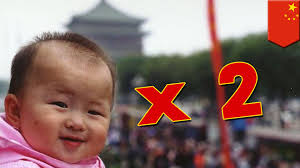
China isn't having enough babies, despite having the largest population of any country in the world.
In order to avoid significant demographic challenges in the coming decades, the relaxation of China's one-child-only policy has so far failed to boost the country's birth rate enough. This was the unspoken conclusion of a government plan which was published very recently.
According to state media reports citing China's National Health and Family Planning Commission, the number of births in the country have been pushed to 17.86 million in 2016, an increase of 7.9 percent over 2015, by the easing of the one-child policy, which was amended in early 2016 to allow all Chinese families to have two children. The figure was the highest since 2000.
A slightly higher figure of 18.46 million births in 2016 was recorded by other data released by China's National Bureau of Statistics.
According to the National Population Development Plan 2016 - 2030, issued by China's State Council, the country's cabinet, the replacement level — at which a population naturally replenishes itself from one generation to the next, in China has languished for years and despite the increase, China's fertility rate remains below the replacement level.
The increase in births is lower than the figure of 20 million for which authorities had hoped, despite state media trumpeting the increase as evidence of the two-child policy's success.
Particularly between 2021 and 2030, China faces a turning point over the next 15 years, the report warns. Pressure on social security and public services would be increased due to the aging of the population which will accelerate. At the same time, economic growth would be damaged and the tax income required to support the elderly would get reduced as the working-age population will shrink.
Compared with about 16 percent in 2015, a quarter of China's population will be over 60 in 2030, the report predicted.
According to a statement Wednesday from China's National Development and Reform Commission, cited by the Wall Street Journal, the working-age population — those aged between 15-59 — will be 80 million fewer in 2030 than in 2015.
China's population will peak in 2030 at 1.45 billion, the report predicts. In 2015, it stood at around 1.37 billion.
A legacy of its attempt at population control through the one-child policy is in part responsible for China's demographic crisis, experts suggest.
"In traditional Chinese culture, more children meant more prosperity, so the traditional household would hope for more children, but the one-child policy has played a role in affecting that," said Jieyu Liu, deputy director of the China Institute at London's School of Oriental and African Studies.
"This recent change to the one-child policy is mostly affecting urban populations," she said. "Since the 1980s, rural households were allowed to have a second child if their first was not a son. I think that after 36 years under the one-child policy, a lot of urban couples have already adapted into this one-child culture."
(Source:www.cnbc.com)
In order to avoid significant demographic challenges in the coming decades, the relaxation of China's one-child-only policy has so far failed to boost the country's birth rate enough. This was the unspoken conclusion of a government plan which was published very recently.
According to state media reports citing China's National Health and Family Planning Commission, the number of births in the country have been pushed to 17.86 million in 2016, an increase of 7.9 percent over 2015, by the easing of the one-child policy, which was amended in early 2016 to allow all Chinese families to have two children. The figure was the highest since 2000.
A slightly higher figure of 18.46 million births in 2016 was recorded by other data released by China's National Bureau of Statistics.
According to the National Population Development Plan 2016 - 2030, issued by China's State Council, the country's cabinet, the replacement level — at which a population naturally replenishes itself from one generation to the next, in China has languished for years and despite the increase, China's fertility rate remains below the replacement level.
The increase in births is lower than the figure of 20 million for which authorities had hoped, despite state media trumpeting the increase as evidence of the two-child policy's success.
Particularly between 2021 and 2030, China faces a turning point over the next 15 years, the report warns. Pressure on social security and public services would be increased due to the aging of the population which will accelerate. At the same time, economic growth would be damaged and the tax income required to support the elderly would get reduced as the working-age population will shrink.
Compared with about 16 percent in 2015, a quarter of China's population will be over 60 in 2030, the report predicted.
According to a statement Wednesday from China's National Development and Reform Commission, cited by the Wall Street Journal, the working-age population — those aged between 15-59 — will be 80 million fewer in 2030 than in 2015.
China's population will peak in 2030 at 1.45 billion, the report predicts. In 2015, it stood at around 1.37 billion.
A legacy of its attempt at population control through the one-child policy is in part responsible for China's demographic crisis, experts suggest.
"In traditional Chinese culture, more children meant more prosperity, so the traditional household would hope for more children, but the one-child policy has played a role in affecting that," said Jieyu Liu, deputy director of the China Institute at London's School of Oriental and African Studies.
"This recent change to the one-child policy is mostly affecting urban populations," she said. "Since the 1980s, rural households were allowed to have a second child if their first was not a son. I think that after 36 years under the one-child policy, a lot of urban couples have already adapted into this one-child culture."
(Source:www.cnbc.com)














